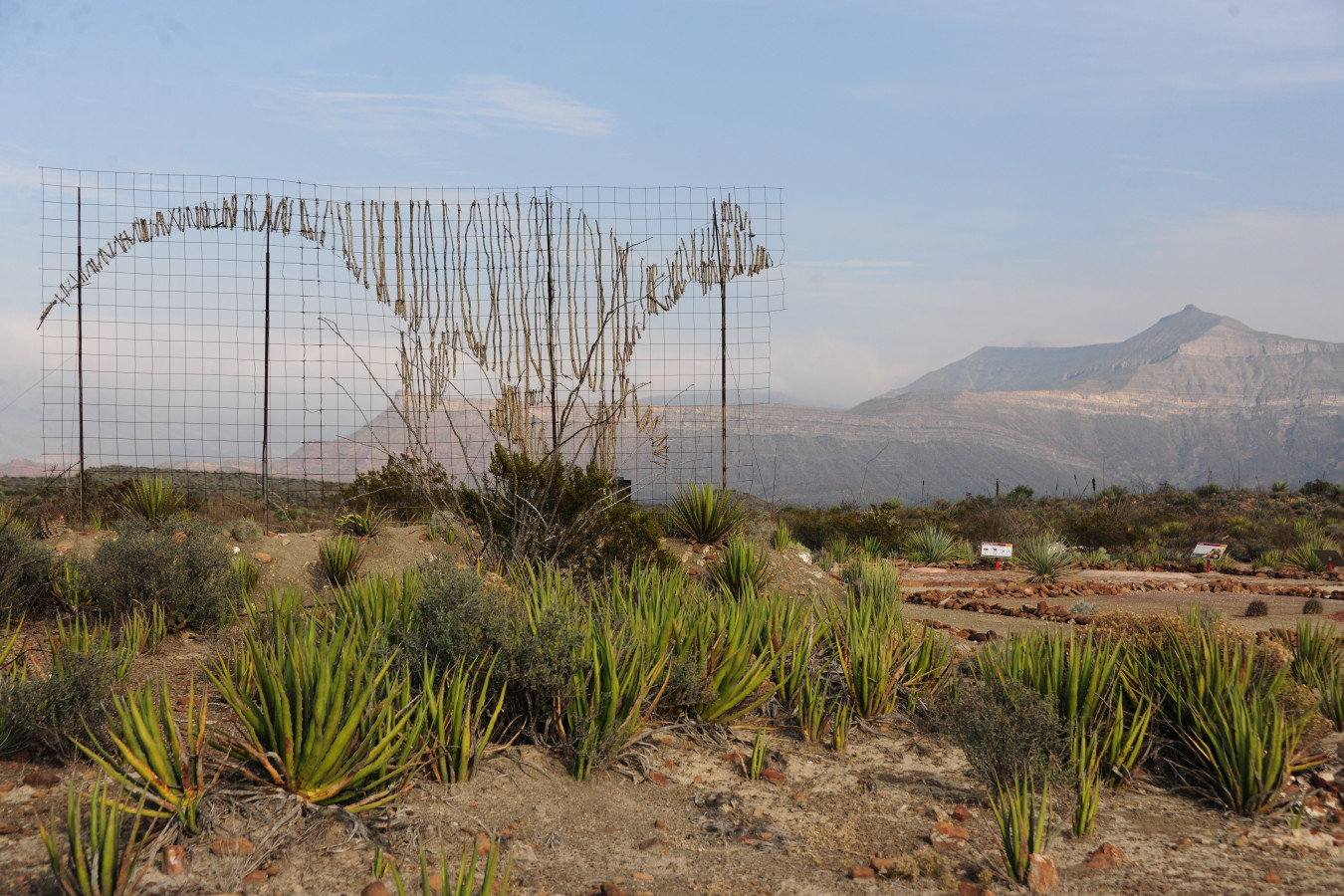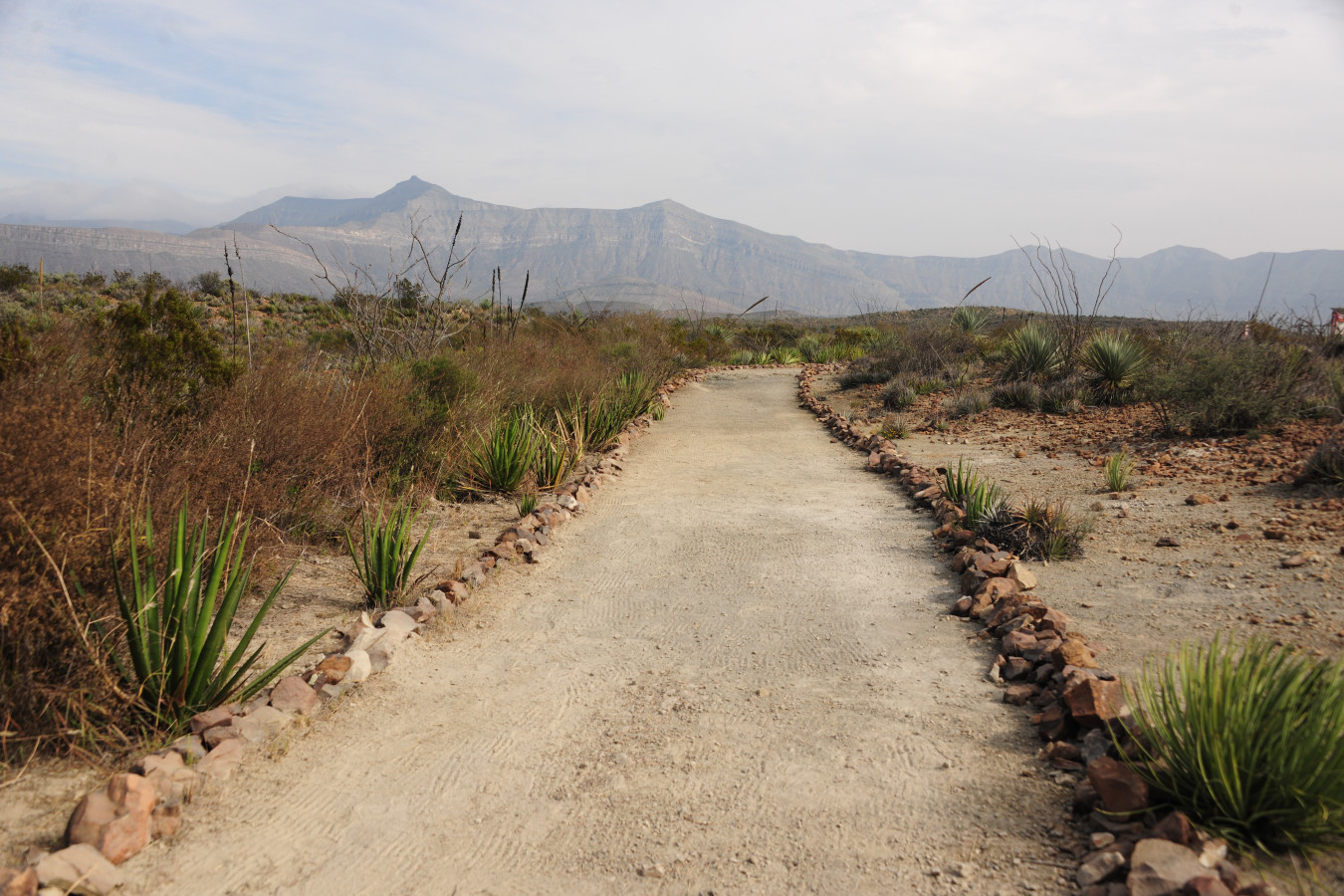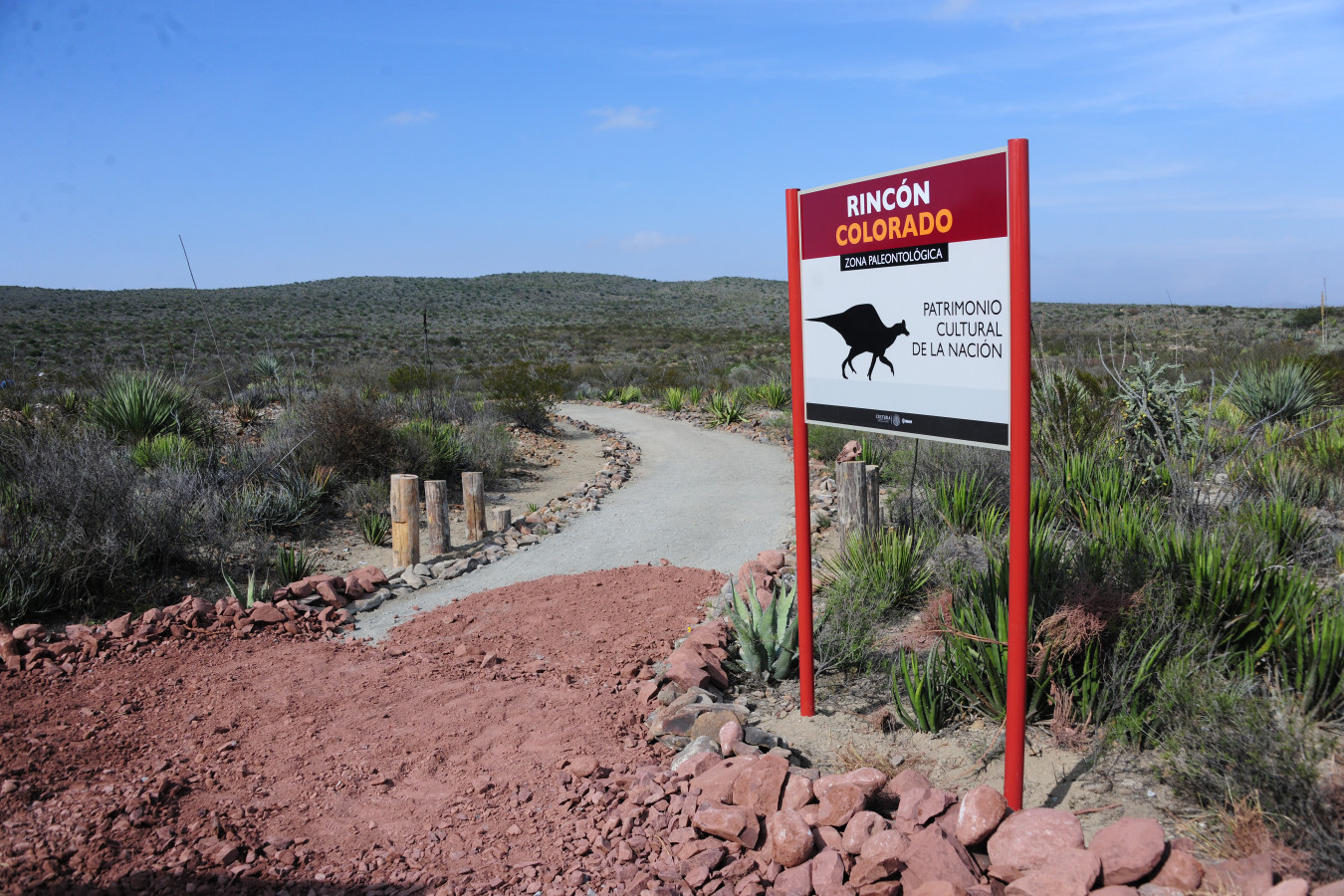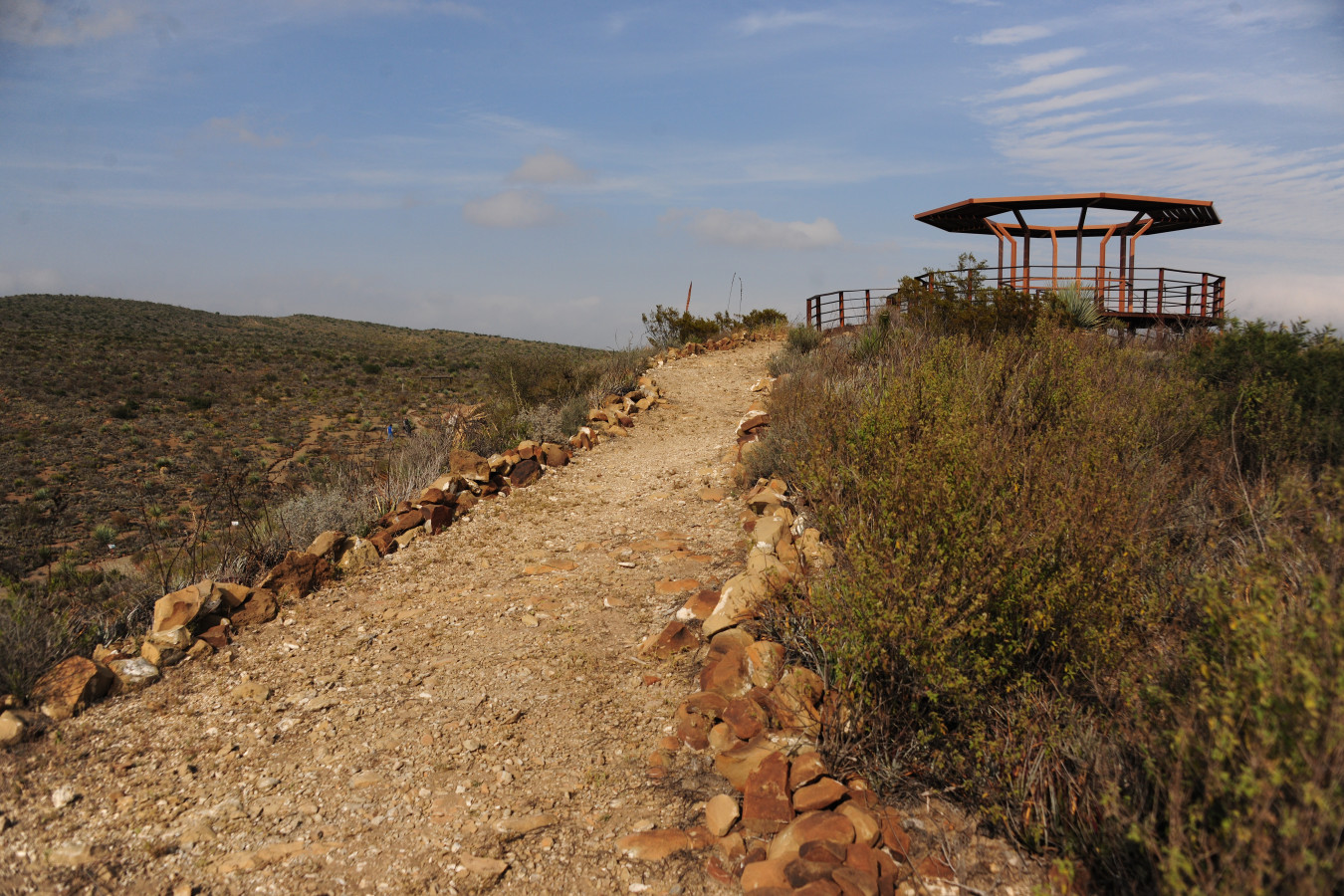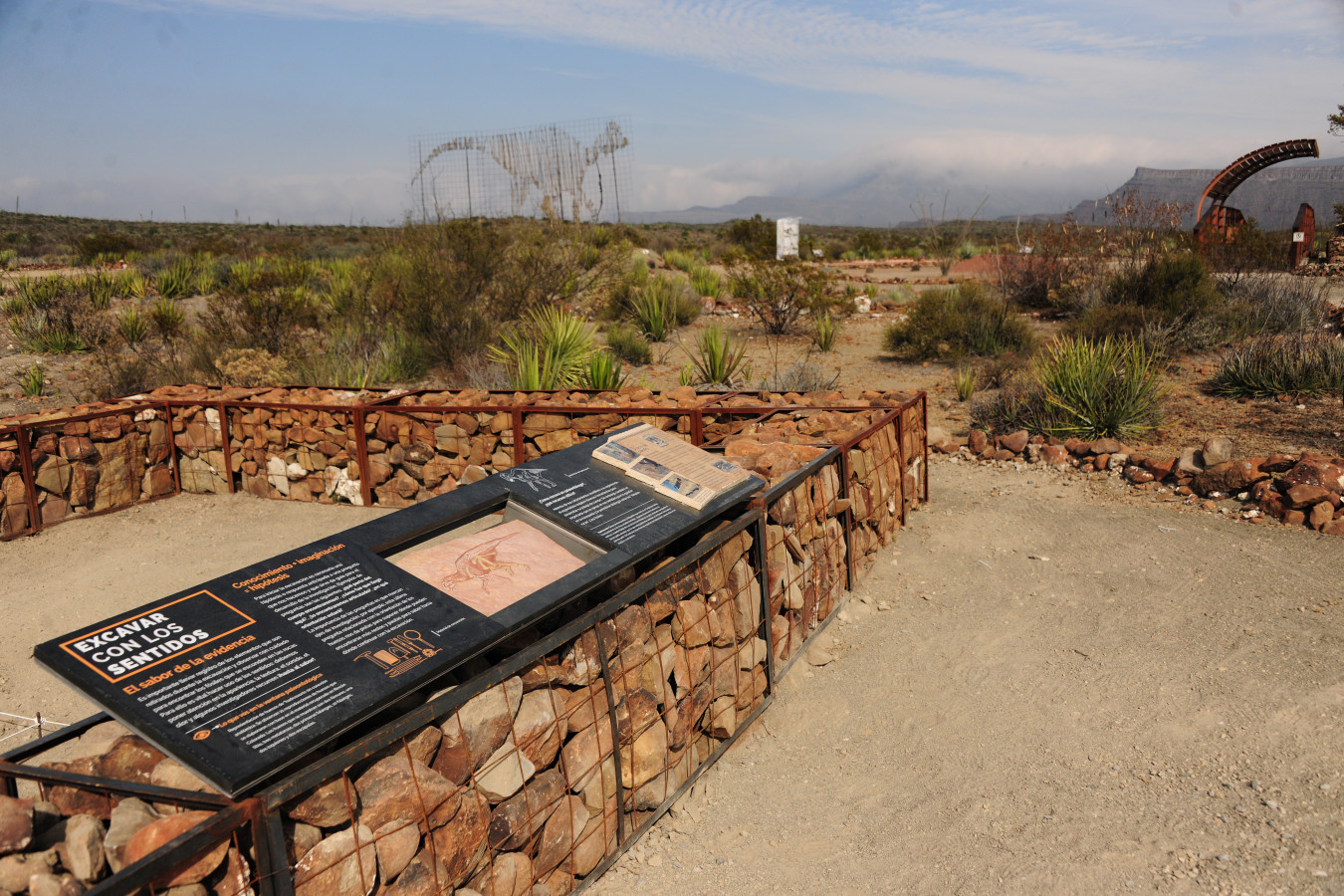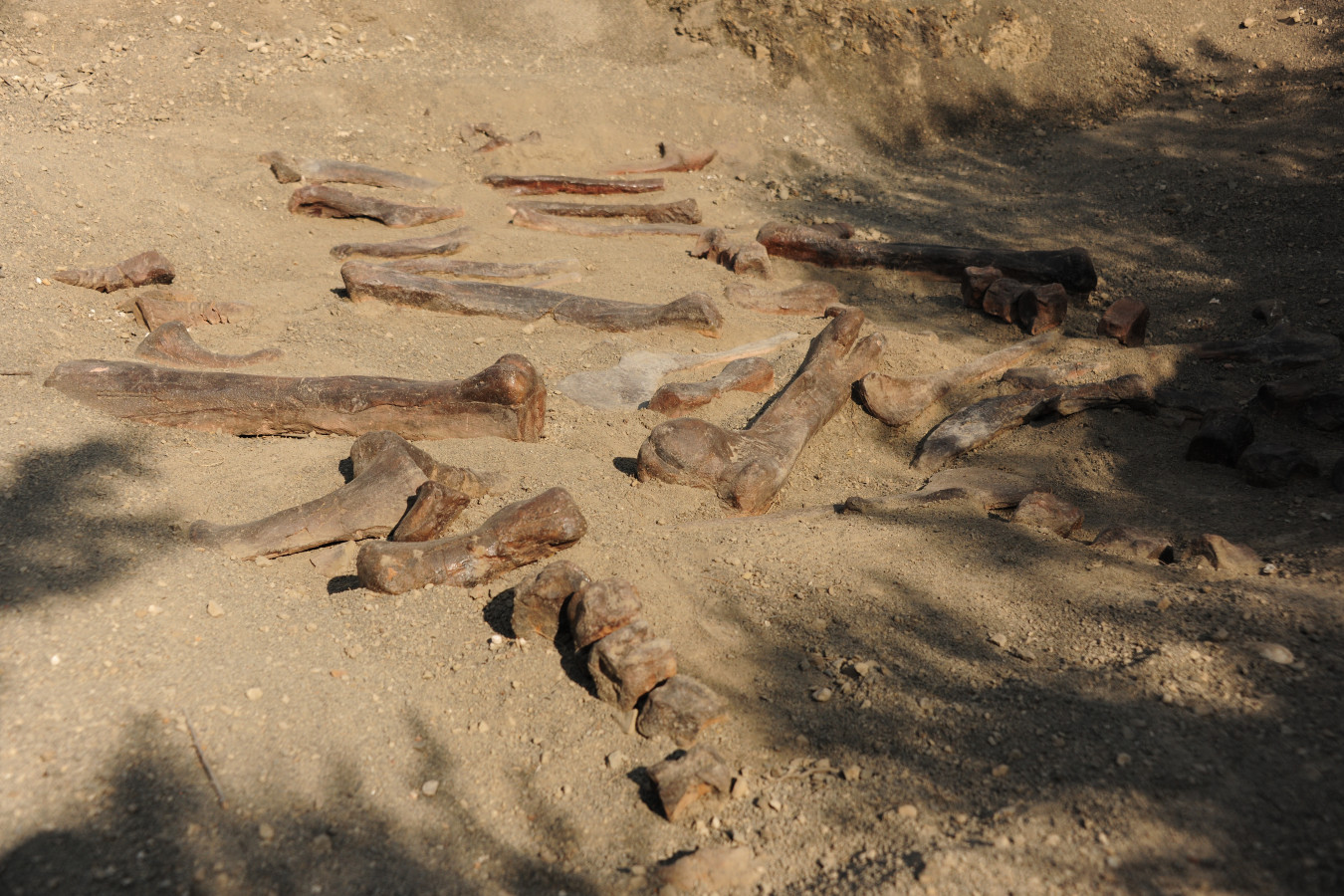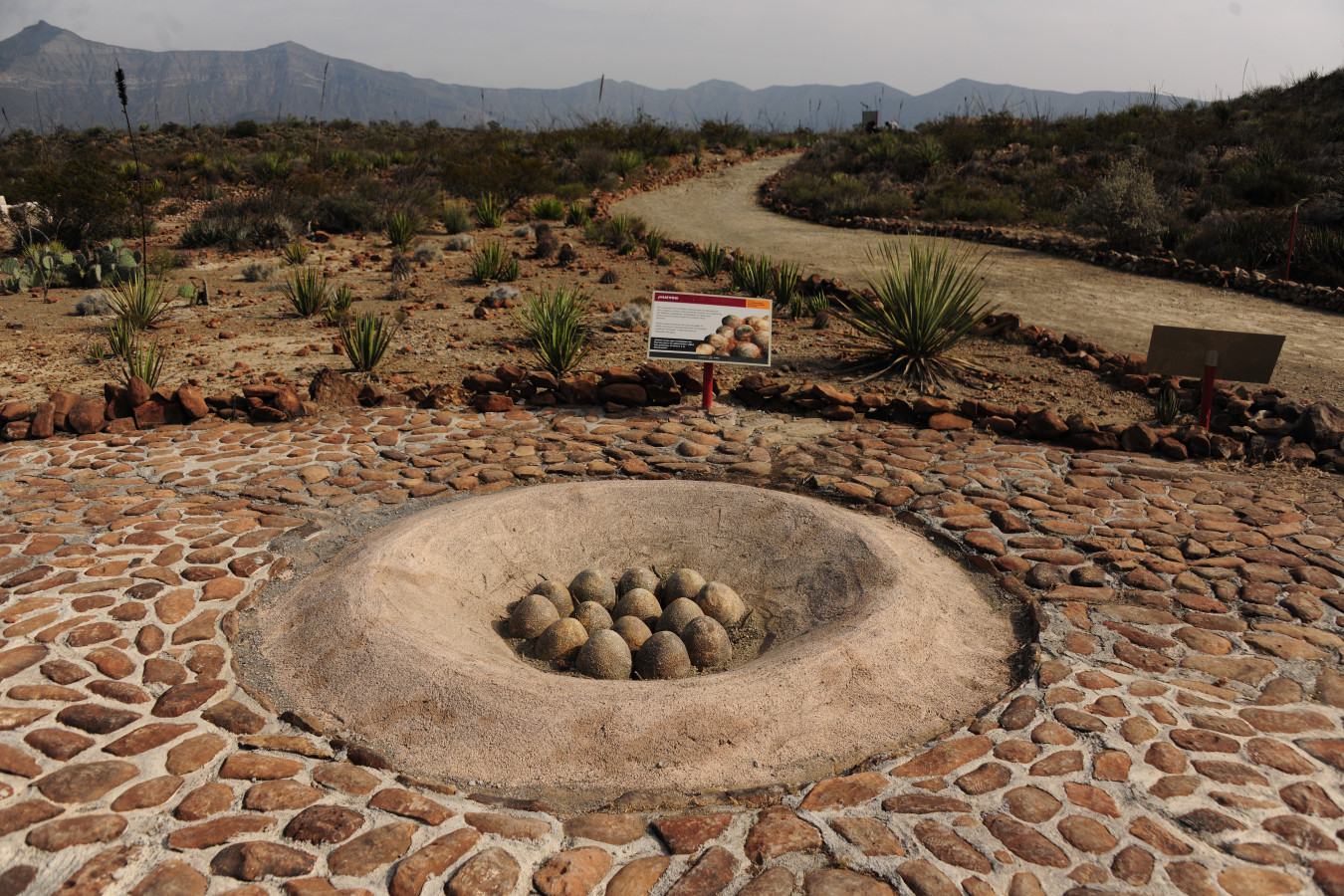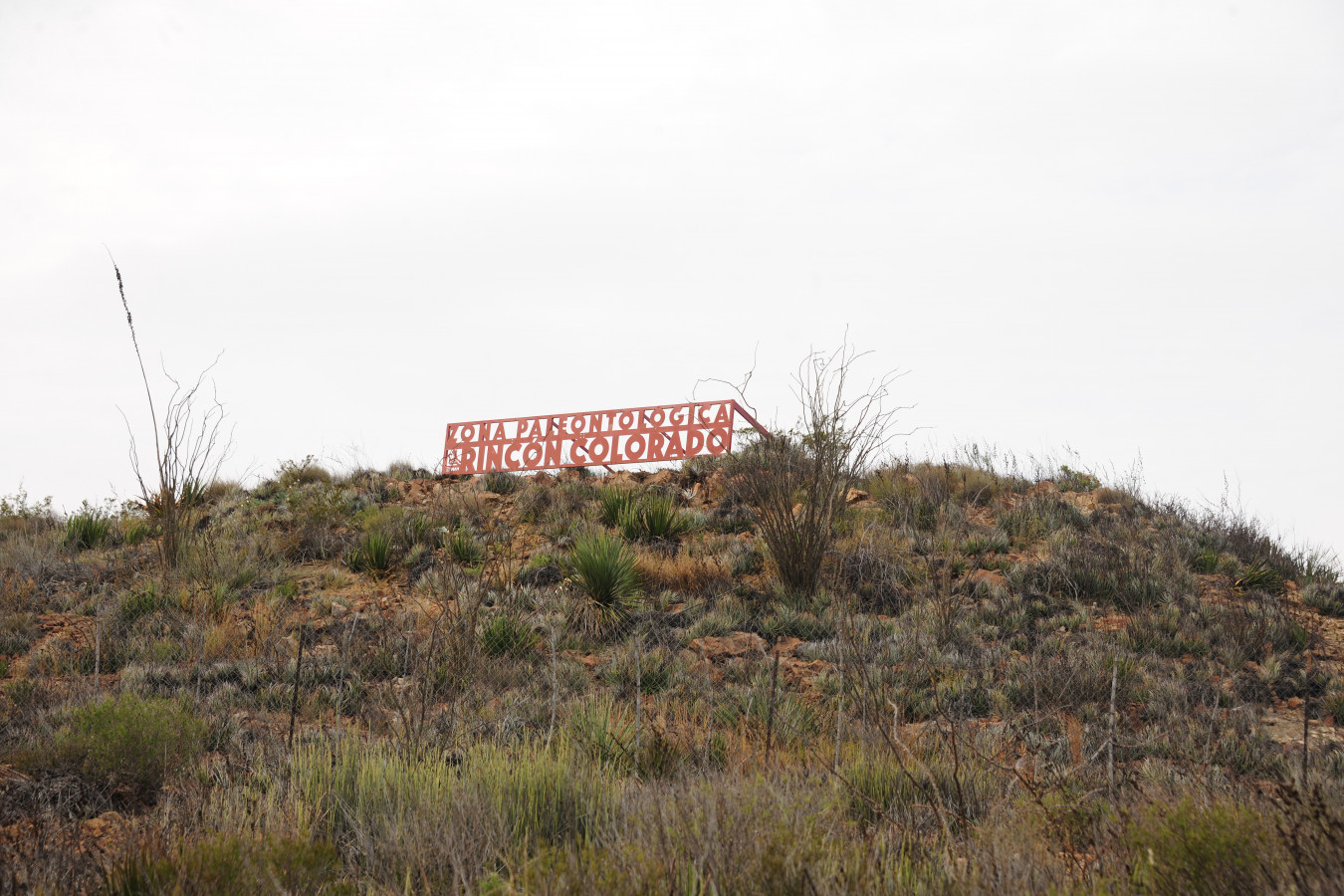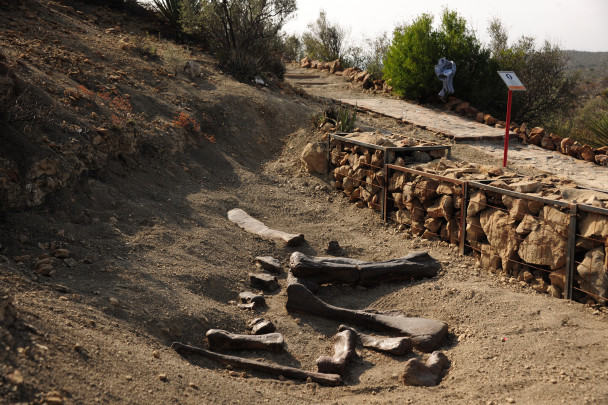Rincón Colorado
This paleontological zone has revealed remains of dinosaurs from the Late Cretaceous period, approximately 72 million years ago. They include fossils that have led to the discovery of new species and new genres of dinosaurs that are unique in the world. For example, the Velafrons coahuilensis dinosaur, characterized by its sail-shaped forehead, not yet encountered anywhere else.
About the site
Rincón Colorado also preserves footprints from beaches dating from the Cretaceous period, together with large concentrations of remains of herbivorous dinosaurs known as hadrosaurs. The site offers a journey 72 million years into the Earth’s past, to the shores of the ancient inner sea of North America that left its mark on the desert, in the rocks and quarries rich in fossils of marine, plant and insect species as well as the hadrosaurs. The paleontological site displays faithful reproductions of the hadrosaur skeletons in order to protect the originals and make them available for research, and offers the opportunity to discover a natural landscape showing geological signs of the Cretaceous period, the last of the Mesozoic era, and explained in the information panels.
Two walkways lead for 1.7 kilometers and reveal the evolution of life on our planet, together with the lives of the people who once lived in this area, at the time a peninsula surrounded by the sea and today the largest desert in North America. Rincón Colorado is the site of fossil discoveries, both isolated fragments and whole skeletons that have enabled the discovery of new and unique species and kinds of dinosaurs such as the hadrosaur (Velafrons coahuilensis), as well as a type of cockroach (Xonpepetla rinconensis).
The paleontological zone includes an educational display and, for the first time, two interactive areas where children and adults alike can get a feel for the daily life of a paleontologist and learn about the tools they use and the abundant fossils of Coahuila. One section is a representation of a nest of eggs to show how they developed, together with reproductions of the footprints of different dinosaurs including triceratops, tyrannosaurus and hadrosaurs, with a key to help identify them. There is also a jigsaw to build with the image of a giant tail excavated in a site nearby.
The tour of the site follows two different routes: the ‘paleontological windows’ route and the ‘geological time’ route. Along the former, the windows show the sites where fossils were found at different moments of exploration and digging. The windows display over 120 reproductions of dinosaur bones cast from the originals. Each of the seven windows includes attractive information panels on the characteristics and way of life of dinosaurs, coupled with an explanation of how paleontological work is carried out and field notes of what was discovered there. Each one has a physical component allowing visitors to touch some of these elements. Peering through the windows, visitors will be able to see what the paleontologists first saw, and later what they discovered when studying the remains. The replicas on show of “duck-billed” hadrosaurs are exact, and in the case of window C, a number of the pieces of Velafrons coahuilensis are located in the place where the remains of the skill and parts of the skeleton were found. A replica of the skull can be touched. The tactile components in Window D are impressions of the arthropods found at this site. Because of their size they are hard to see, so this is a way of learning about the cockroach Xonpepetla rinconensis discovered here.
The second route takes visitors on a journey through geological time and aims to give a sense of the formation of Earth in the Solar System and landmarks in the evolution of life on the planet. This path leads to an area of the desert landscape full of snails and oysters that was once a Cretaceous beach beside the ancient inner sea of North America, rich in tropical vegetation. At the highest point of the route a circular lookout has been created providing extraordinary 360° views over the Coahuila desert.
Two walkways lead for 1.7 kilometers and reveal the evolution of life on our planet, together with the lives of the people who once lived in this area, at the time a peninsula surrounded by the sea and today the largest desert in North America. Rincón Colorado is the site of fossil discoveries, both isolated fragments and whole skeletons that have enabled the discovery of new and unique species and kinds of dinosaurs such as the hadrosaur (Velafrons coahuilensis), as well as a type of cockroach (Xonpepetla rinconensis).
The paleontological zone includes an educational display and, for the first time, two interactive areas where children and adults alike can get a feel for the daily life of a paleontologist and learn about the tools they use and the abundant fossils of Coahuila. One section is a representation of a nest of eggs to show how they developed, together with reproductions of the footprints of different dinosaurs including triceratops, tyrannosaurus and hadrosaurs, with a key to help identify them. There is also a jigsaw to build with the image of a giant tail excavated in a site nearby.
The tour of the site follows two different routes: the ‘paleontological windows’ route and the ‘geological time’ route. Along the former, the windows show the sites where fossils were found at different moments of exploration and digging. The windows display over 120 reproductions of dinosaur bones cast from the originals. Each of the seven windows includes attractive information panels on the characteristics and way of life of dinosaurs, coupled with an explanation of how paleontological work is carried out and field notes of what was discovered there. Each one has a physical component allowing visitors to touch some of these elements. Peering through the windows, visitors will be able to see what the paleontologists first saw, and later what they discovered when studying the remains. The replicas on show of “duck-billed” hadrosaurs are exact, and in the case of window C, a number of the pieces of Velafrons coahuilensis are located in the place where the remains of the skill and parts of the skeleton were found. A replica of the skull can be touched. The tactile components in Window D are impressions of the arthropods found at this site. Because of their size they are hard to see, so this is a way of learning about the cockroach Xonpepetla rinconensis discovered here.
The second route takes visitors on a journey through geological time and aims to give a sense of the formation of Earth in the Solar System and landmarks in the evolution of life on the planet. This path leads to an area of the desert landscape full of snails and oysters that was once a Cretaceous beach beside the ancient inner sea of North America, rich in tropical vegetation. At the highest point of the route a circular lookout has been created providing extraordinary 360° views over the Coahuila desert.
Practical information
Tuesday to Sunday from 09:00 to 16:00 hrs.
Free entry
Kilómetro 43.5 de la carretera Saltillo-Torreón, Saltillo, Coahuila.
Para acceder al sitio se toma la carretera federal Saltillo-Torreón hasta el km 43, donde está la desviación al ejido de Rincón Colorado, municipio de General Cepeda; a 2.7 kilómetros se encuentra la comunidad, donde se deberá dejar el automóvil.
Services
-
+52 (844) 410 19 18
-
This email address is being protected from spambots. You need JavaScript enabled to view it.
-
FACEBOOK
Directory
Investigadora
Felisa Josefina Aguilar Arellano
This email address is being protected from spambots. You need JavaScript enabled to view it.
+52 (844) 410 19 18

